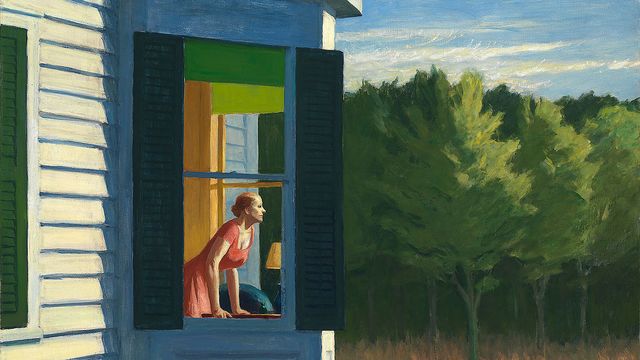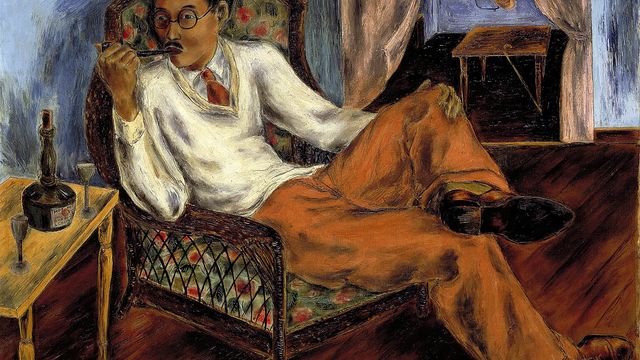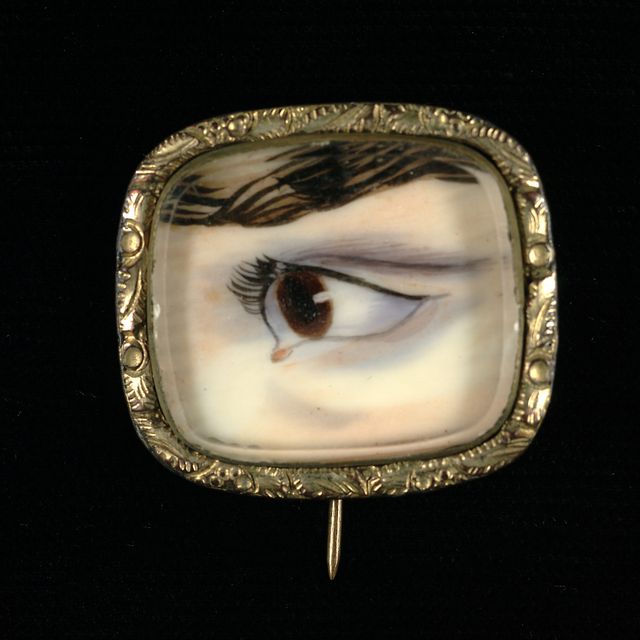Artwork Details
- Title
- The Lorelei
- Artist
- Date
- ca. 1896 - 1917
- Location
- Dimensions
- 22 1⁄2 x 19 1⁄4 in. (57.2 x 48.9 cm)
- Credit Line
- Gift of Tulip Tree Foundation, Robin B. Martin, Trustee
- Mediums
- Mediums Description
- oil on canvas
- Classifications
- Subjects
- Landscape — time — night
- Landscape — rocks
- Waterscape — celestial — moon
- Object Number
- 2011.8
Artwork Description
The Lorelei, one of Albert Pinkham Ryder's larger paintings, links love and death, a common theme among late nineteenth-century artists, poets, and musicians. The tale of the Lorelei became popular in the mid-nineteenth century when German poet Heinrich Heine (1797-1856) penned a poem about her, which a number of composers set to music. Ryder's image is based on the second and third stanzas of the poem (above), and his friends reported that he sang "the song of the Lorelei" while working on this painting. According to German folklore, the Lorelei is an evil seductress who lives on a large rock above the Rhine River. Much like the sirens of Greek mythology, she beguiles sailors with her singing, luring their ships to destruction. There actually exists such a rock, marking the river's narrowest point between the North Sea and Sweden. The strong current and submerged rocks make this area dangerous to navigate and it has been the scene of many shipwrecks throughout history. Ryder worked on The Lorelei for many years. He wrote in 1896 that he'd finished the painting, but continued to rework the canvas until his death, more than twenty years later. Ryder struggled with where to place the "witching maiden," and over the years his glazes faded, causing the figure to blend into the rocks behind her. (Broun, Albert Pinkham Ryder, 1989)
The Lorelei, one of the painter's larger canvases, is the only painting by Ryder that links love and death in a way so intriguing to late nineteenth-century artists, poets, and musicians. Ryder based his work on Heinrick Heine's famous poem in which Lorelei was an evil seductress, similar to the Greek siren. She lived atop a high rock along the treacherous narrows of the Rhine River. With her irresistible song, she enchanted passing sailors, who strove to reach her. Here a sailor tries to steer his craft toward the nymph on the rock but is sucked to his death in whirlpools and rapids, as are all others. Heine's The Lorelei was translated and widely published in America and put to music by numerous composers. Ryder quite possibly was familiar with Friedrich Silcher's popular melody of the verse, for friends often heard him "sing the song of the Lorelei" while working on the painting during his night sessions.
Ryder was obsessed with this dark and brooding scene, which he worked over more than any of his other paintings. The tragic scene and his inability to let it go may in fact symbolize Ryder's realization that he was never to find a woman to love. From the mid-1890s until his death in 1917, he strove for the perfection of his inner vision, even though he pronounced the painting "finished" in 1896. Visitor after visitor remarked on the constantly changing position of Lorelei within the painting.
The Lorelei originally was intended for Helen Ladd Corbett, daughter of Portland, Oregon, banker William Ladd and a close friend of Charles Erskine Scott Wood, one of Ryder's major patrons who acted as intermediary. Mrs. Corbett even paid for it, but never received the painting. For unknown reasons the painting went to Wood after the artist's death and remained in the Wood family until 1957. Alastair Martin purchased The Lorelei in 1959, and his son, Robin Martin, gave the painting to the museum in 2011. In 2005, Alastair Martin presented the museum with Ryder's early, small painting The Lovers' Boat, depicting two blissful lovers in romantic moonlit and suggesting the painter’s optimism towards finding love. Thus, Ryder comes full circle in these two paintings.
Smithsonian American Art Museum, 2011













